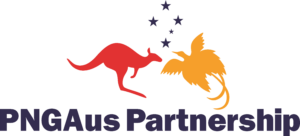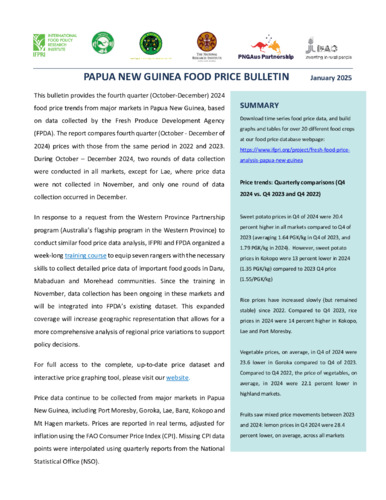
Brief
Papua New Guinea food price bulletin: January 2025
2025International Food Policy Research Institute; Schmidt, Emily; Kedir Jemal, Mekamu

Brief
Papua New Guinea food price bulletin: October 2024
2024International Food Policy Research Institute; Kedir Jemal, Mekamu; Hayoge, Glen
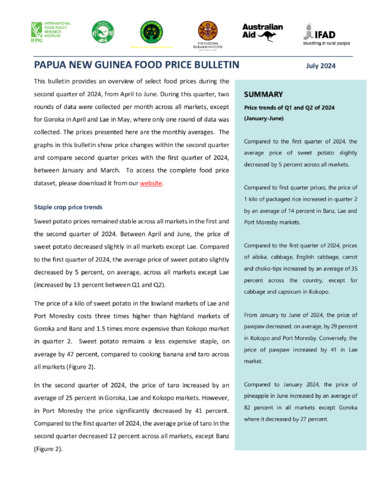
Brief
Papua New Guinea food price bulletin: July 2024
2024International Food Policy Research Institute; Hayoge, Glen; Kedir Jemal, Mekamu; Schmidt, Emily
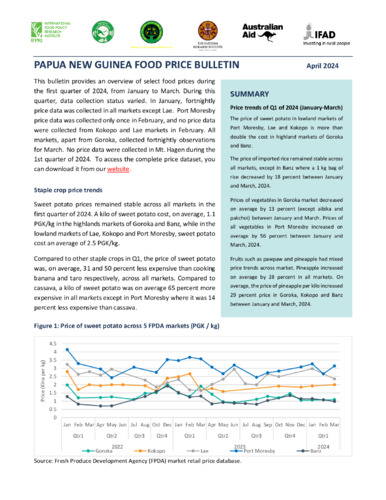
Brief
Papua New Guinea food price bulletin: April 2024
2024Hayoge, Glen; Kedir Jemal, Mekamu; International Food Policy Research Institute
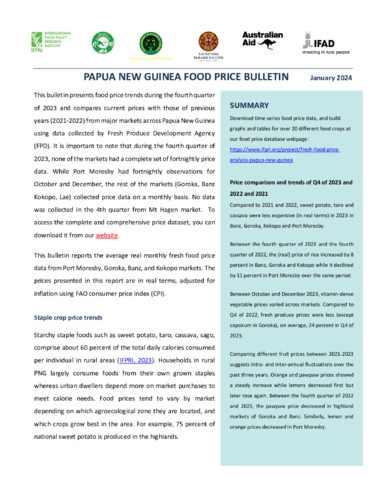
Brief
Papua New Guinea food price bulletin: January 2024
2024International Food Policy Research Institute; Kedir Jemal, Mekamu; Schmidt, Emily
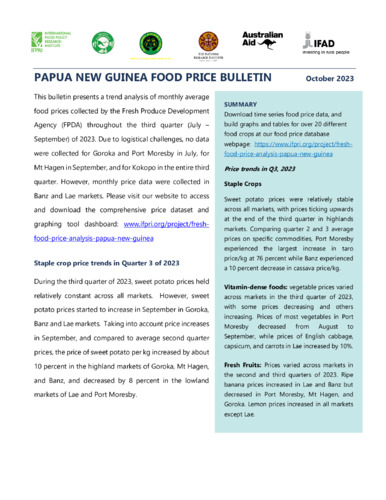
Brief
Papua New Guinea food price bulletin: October 2023
2023International Food Policy Research Institute; Hayoge, Greg; Kedir Jemal, Mekamu; Schmidt, Emily
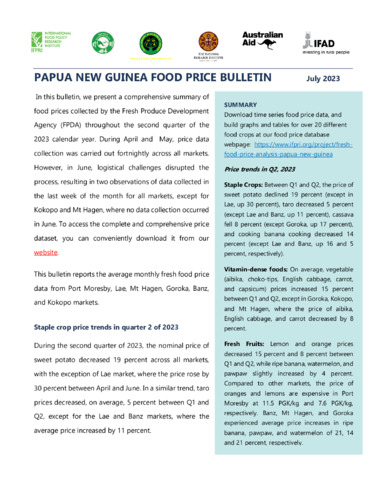
Brief
Papua New Guinea food price bulletin: July 2023
2023International Food Policy Research Institute; Hayoge, Greg; Kedir Jemal, Mekamu; Schmidt, Emily

Brief
Papua New Guinea food price bulletin: April 2023
2023International Food Policy Research Institute; Hayoge, Greg; Kedir Jemal, Mekamu
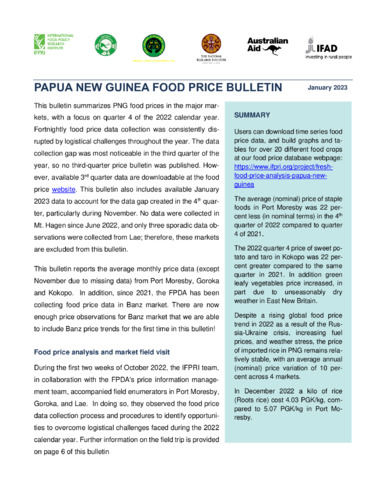
Brief
Papua New Guinea food price bulletin: January 2023
2023International Food Policy Research Institute; Kedir Jemal, Mekamu; Schmidt, Emily
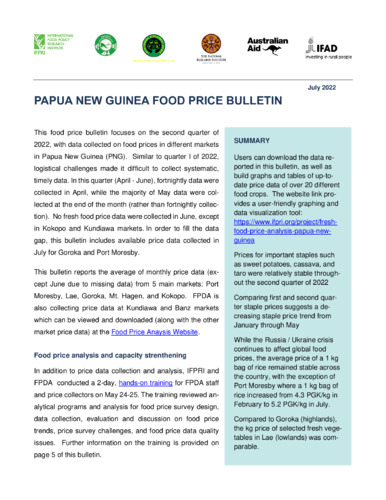
Brief
Papua New Guinea food price bulletin: July 2022
2022International Food Policy Research Institute; Kedir Jemal, Mekamu; Schmidt, Emily

Brief
Papua New Guinea food price bulletin: April 2022
2022International Food Policy Research Institute; Schmidt, Emily; Kedir Jemal, Mekamu
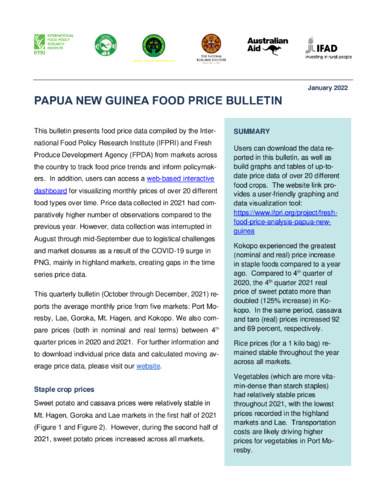
Brief
Papua New Guinea food price bulletin: January 2022
2022International Food Policy Research Institute; Kedir Jemal, Mekamu; Schmidt, Emily
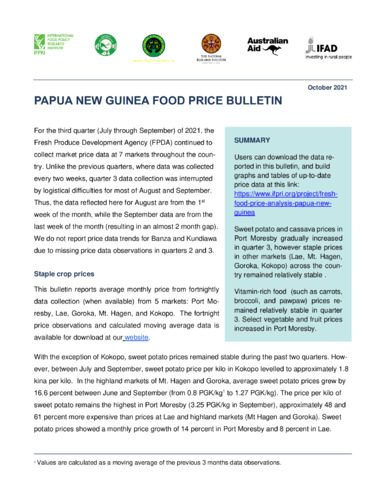
Brief
Papua New Guinea food price bulletin: October 2021
2021International Food Policy Research Institute
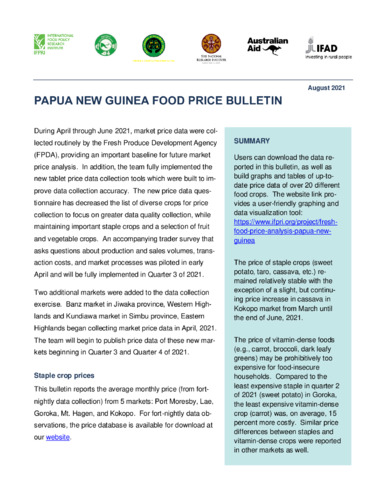
Brief
Papua New Guinea food price bulletin: August 2021
2021International Food Policy Research Institute; Kedir Jemal, Mekamu; Schmidt, Emily

Brief
Papua New Guinea food price bulletin: May 2021
2021International Food Policy Research Institute; Kedir Jemal, Mekamu; Schmidt, Emily
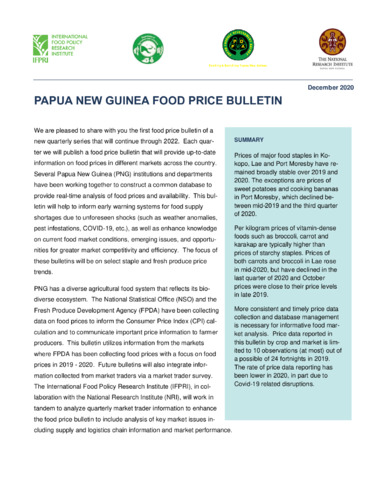
Brief
Papua New Guinea food price bulletin: December 2020
2021International Food Policy Research Institute; Kedir Jemal, Mekamu; Schmidt, Emily

